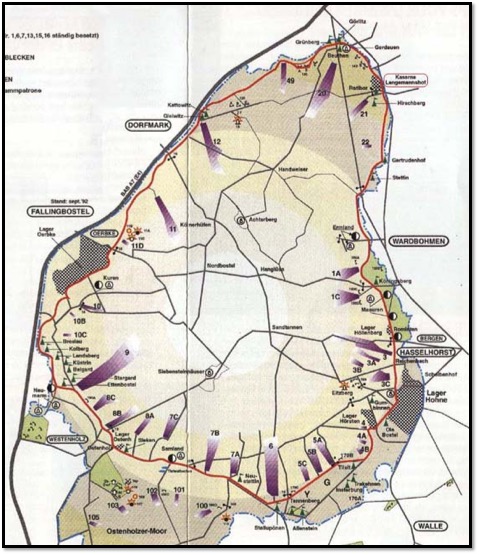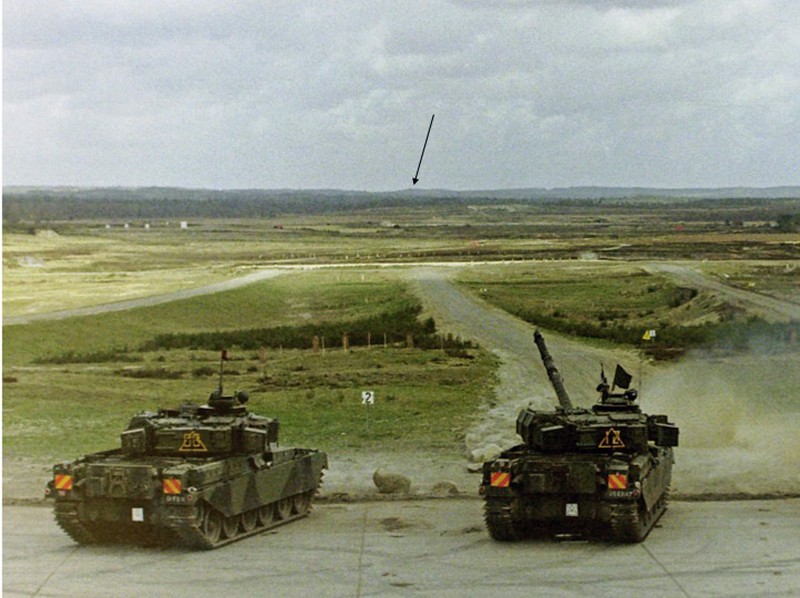Thanks Mark.
Some more photos from yesteryear, which I've just found. This first one needs explaining.
This is Bergen Hohne Ranges, 1990 and the command group, 4th Tanks is having a picnic on the structure known to us and to generations of British tank crews as the Hitler Hof. It is the remains of a massive observation bunker built between 1933-34 as the Wehrmacht began to form the Panzer Truppen. Legend has it that Hitler would use the bunker to observe his forces and impress visitors. Bergen Hohne was a principal tank training area close to Luneberg Heath, some 20km by 17km in size. Post war, it became a major NATO firing complex which could accommodate live tank, artillery, mechanised infantry and air to ground weapons.

- Bergen Hohne Schiessplatz.jpg (99.92 KiB) Viewed 11961 times
The Hitler Hof was probably never used by Hitler but there is evidence that Herman Goering did frequent it. This is the Hitler Hof/Hohe in the 1950s when the bunker was substantially complete.
We knew it for a different reason. It was not only a scenic place from which to plan training exercises (and from the photographic evidence, have the odd can of Tennants) but it was also a target. This photo was taken on Range 7B, right in the southern part of the ranges and some 5300m from the Hitler Hof, which is arrowed.

By the time the photo was taken, firing at the bunker was prohibited although by then, little remained for preservation. In the seventies, when I first fired at Hohne, it was very much fair game. I've posted the picture to illustrate what Chieftain could do at long range. Although our principle focus was direct fire out to about 2500 metres, using APDS/APFSDS, we had the capability of engaging at longer ranges with HESH and Smoke using semi-indirect techniques. The gun was capable of engaging out to about 10km but this was an inefficient use of tank ammunition and better done by artillery or air. Up to about 5km, the commander could probably see and identify an area target and engage with semi-indirect fire.
I should explain the terms. With a direct fire shoot, the gunner is able to lay onto the target with his sight because, despite the tangent elevation of the gun, the target still falls within his field of view and ballistic graticule pattern. At longer ranges, the tangent elevation (how much the gun was cocked up) was such that he could no longer see the target. The engagement was then controlled by the commander using binoculars and the gunner established his gun lay by using a traverse indicator for line and a quadrant fire control for elevation.
At the end of a range period, it was traditional to do a squadron semi-indirect shoot onto the Hitler Hof. Advocates of one piece ammunition derided the Chieftain split case ammunition for supposedly slow rates of fire but with a good loader, we could get three rounds in the air at the same time at those ranges and could achieve 5-6 rounds per minute, as fast as any single piece ammunition and faster than most auto-loaders. It was a truly impressive sight but probably of limited use in war.
Now back to the picnic. Anyone for Tennants?